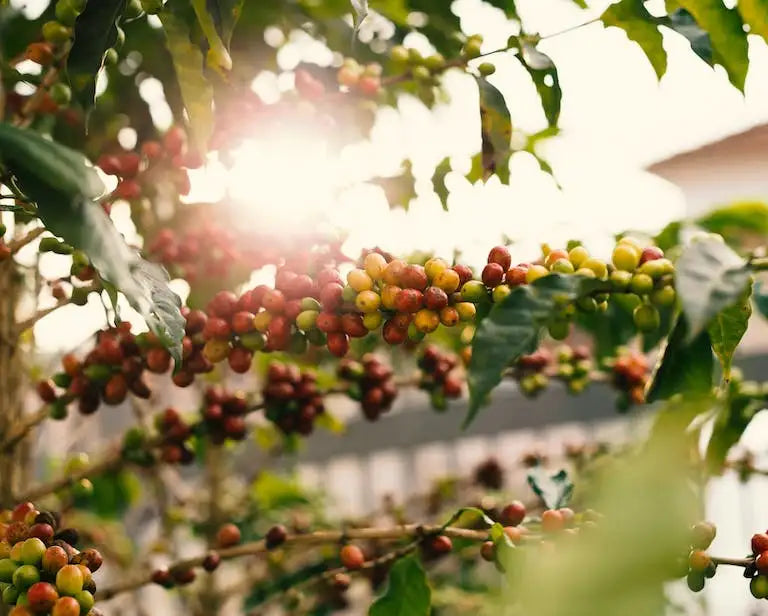A History Of Coffee

Before we’ve had our morning fix, many of us have only one thing on our minds: coffee. Getting your morning cup of joe is simple, as there’s coffee shops on every street corner these days. However, would you know where coffee originated off the top of your head? Do you know what the “Bean Belt” is? In this short article, we’ll give you a quick rundown of coffees journey through history.
THE HISTORY OF COFFEE
So where did it all start? It is generally believed that the growth of coffee beans began in Ethiopia, where the hot equatorial climate provides an ideal growing condition for coffee plants. In fact, coffee gets its name from the Ethiopian province, Kaffa, where the plant originated from.
It is believed that early Ethiopian monks knew about the effects of coffee beans, and often chewed them for a simulating boost. However, there’s a legend involving a shepherd that explains how coffee beans were first brewed into water. Legend has it that a shepherd in Ethiopia noticed his goats behaving erratically after ingesting the beans. He took the berries to his local monks, who decried them as evil and threw them into a fire. However, as the beans burned, the enticing smell of coffee filled the room. They took the burnt beans from the fire and placed them into a bowl of water and began drinking it.
Early evidence of coffee drinking spans back to 15thcentury Yemen. From there, it moved north into India, Persia, and Turkey. By the 1600s it had entered Europe before crossing the pond to the Americas in the 1700s.
WHERE IS COFFEE GROWN?
Coffee grows in the “Coffee Belt” or “Bean Belt, a three-thousand-mile-wide belt running along the equator between the Tropic of Capricorn and Tropic of Cancer. The plant requires extremely warm and humid environments, which makes the tropical lands around the equator ideal for its growth. Common regions include Hawaii, Brazil, Columbia, Ethiopia, Yemen, and Indonesia. Slight variations in the climate of these regions, as well has variations in the production and harvesting methods create very noticeable differences in the taste and aroma profiles.

It is possible to grow coffee outside of tropical regions, but the plants may struggle to survive and produce a much smaller yield. Therefore, non-tropical regions typically make the production not economically feasible for commercial purposes.
HISTORY OF COFFEE IN AMERICA
Coffee started to become popular in the United States in the 18thcentury during the revolutionary war. This is partially due to the fact that after the Boston Tea Party, drinking tea was considered unpatriotic. American patriots needed another way to get their caffeine fix and turned to coffee instead of tea. Over the past few centuries, this has led to a massive coffee market in the United States followed by a much smaller tea market.
WHERE IS COFFEE GROWN IN THE U.S.?
While Hawaii is undoubtedly the leading producer in the United States, there is a blooming coffee scene in Southern California. Farms are sprouting up from San Diego to Santa Barbara, as farmers are realizing that coffee trees are surviving in the mostly warm, but not quite tropical climate.
HISTORY OF COFFEE IN HAWAII
In 1817, coffee plants were brought to Hawaii by Don Francisco de Paula Marin. Over the next few years, different variations of the plant were brought from different regions of the world, some of which failed while others thrived. In the 200 years since, coffee farming has exploded in Hawaii, and produces what we now know as “Kona” coffee.

HOW IT’S CELEBRATED
National coffee day has become a prominent day for coffee shops all across the United States. It originated from the National Coffee Association (NCA) and is always celebrated on September 29th. Coffee shops take advantage of this day by whipping up special promotions to entice customers into coming in and celebrating with them. Both consumers and coffee shops post on social media to showcase their hand-crafted drinks using the hashtag #NationalCoffeeDay amongst others.
WRAP UP
Since its discovery, coffee has grown to become the highest consumed beverage in the world. In developed nations, coffee shops can be found on every street corner, and coffee machines can be found in every professional office. In fact, nearly 500 million cups are consumed in the United States every single day.
What started with monks chewing beans to stay awake has evolved into a massive global industry with trillions of dollars in annual profit. Whether you drink black coffee from sun-up to sun-down, or just enjoy an occasional frappe, the coffee industry has secured a lasting impact on your life.




